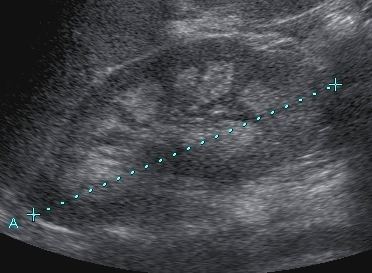Specialty urology ICD-9-CM 275.49 MedlinePlus 000492 | ICD-10 E83.5†N29.8* DiseasesDB 8902 eMedicine article/243911 | |
 | ||
Nephrocalcinosis, once known as Albright's calcinosis after Fuller Albright, or Anderson-Carr kidneys, is a term originally used to describe deposition of calcium salts in the renal parenchyma due to hyperparathyroidism. It is now more commonly used to describe diffuse, fine, renal parenchymal calcification on radiology. During its early stages, nephrocalcinosis is visible on x-ray, and appears as a fine granular mottling over the renal outlines. These outlines eventually come together to form a dense mass. It is most commonly seen as an incidental finding with medullary sponge kidney on an abdominal x-ray. However, it may be severe enough to cause (as well as be caused by) renal tubular acidosis or even end stage renal failure, due to disruption of the renal tissue by the deposited calcium.
Contents
Stages of nephrocalcinosis
Symptoms of nephrocalcinosis
Though this condition is usually asymptomatic, if symptoms are present they are usually related to the causative process, (e.g. hypercalcemia). These include renal colic, polyuria and polydipsia:
There are several causes of nephrocalcinosis that are typically acute and present only with renal failure. These include tumor lysis syndrome, acute phosphate nephropathy, and occasional cases of enteric hyperoxaluria.
Cortical nephrocalcinosis
Medullary nephrocalcinosis
And other causes of hypercalcemia (and thus hypercalciuria)
